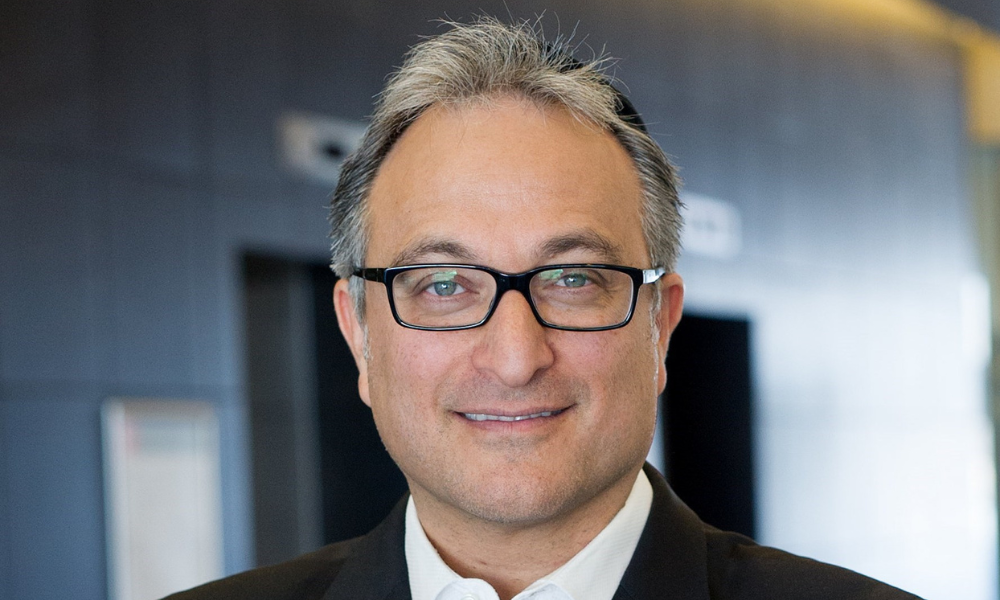Expert in life insurance-based philanthropy explains how first-in-Canada policy tears down barriers to tax-efficient giving

This article was produced in partnership with Canada Life.
It’s been two weeks since Canada Life introduced a first-of-its-kind insurance product designed solely for charitable giving, and the excitement around it has been palpable.
“It’s been extremely well received among the non-profit charitable community,” says Mark Halpern, CEO of WEALTHInsurance.com (pictured above). “I had a LinkedIn Live event on this that got 450 registered participants, and a couple of thousand have already watched it.”
Developed in consultation with the Canadian Association of Gift Planners (CAGP) and other gift planning experts, My Par Gift allows clients to designate a registered charity as the owner and beneficiary of the policy and all its associated benefits.
Halpern, who’s also an active member of CAGP, was asked by Canada Life to help around the product design over the past two years. He says My Par Gift’s unique design lowers a lot of long-standing barriers and opens new doors for charitable giving conversations.
“People in the charitable and professional community know that planned legacy giving and the use of life insurance for charity is sadly so below the radar. My Par Gift just gives them a reason to now look at introducing the strategy for their donors,” Halpern says.
Andrea Frossard, senior vice president, Par Insurance at Canada Life, says there’s been “a really, really big buzz in the marketplace” around My Par Gift. “We’ve had people on social media refer to it as a game-changer,” she says. “It’s very aligned with Canada Life’s brand and wanting to do things to help others in the community.
“We’ve had extremely positive responses from advisors wanting to learn more. We’ve even seen advisors create their own videos [about it] and post them online,” Frossard says. “We’ve also had a lot of interest from charities reaching out and wanting to know how they can incorporate it into their planned giving strategies.”
A country generous to its core, Canada is still punching below its weight when it comes to creating charitable impact. Halpern says most donors across the country are still making contributions through cash checks and credit cards, instead of using more tax-efficient vehicles like donating appreciated securities or life insurance.
There’s also a strong incentive for charities to prefer cash donations. Registered charities need steady cash flow to stay afloat – a challenge especially during the COVID-19 pandemic – and donors may decide to dial back on current giving if offered a legacy giving option.
“Unless you’re a huge organization, you don’t have the luxury of a lot of resources, and the ones with a lot of staffing don’t necessarily have the knowledge required around the use of life insurance,” Halpern says. “Charities tend to look at life insurance donations as something that’s very technical, morbid and cumbersome, as they’d have to manage the policy for the donor’s remaining lifetime and talk about their death.”
My Par Gift can help solve many of those problems. Because the policy only requires a one-time payment, it takes away the administrative complexity from charities it is donated to; it’s also a plus for donors, who can claim a charitable receipt for the full one-premium payment to help mitigate up to 75% of their net taxable income.
As a participating life insurance product, it generates yearly dividends that the charity can collect as cash payments and use each year. The cash surrender value of the policy, Halpern adds, is another possible source of liquidity. And because My Par Gift helps create gifting opportunities while donors are alive, he says it helps solve the issue of talking about death.
The policy could also help supercharge the financial impact of a donation. Based on an analysis by Canada Life, donating a $100,000 My Par Gift policy purchased with cash can have five to 18 times the impact of a $100,000 cash donation to a charity, depending on the donor’s age whether the policy is a single or Joint Last to Die (JLTD) one. For a policy funded with appreciated public shares like stock, mutual funds, ETFs or segregated funds, that multiplier increases to between seven and 24 times the impact of a $100,000 cash gift.
“The challenge is getting the word out there. Just talking about life insurance sort of puts people to sleep … it feels complicated and technical,” he says. “Charities have to recognize the opportunity and the responsibility, but the real need is for professional advisors who also have to step up.”
As a first-in-Canada offering, Halpern says My Par Gift can spark engaging conversations with prospects, existing clients, and local charities and their donors that advisors might be working with. He also encourages more advisors to learn about it or, even better, partner with experts in charitable giving and strategic philanthropy, like members at CAGP.
For wealth professionals who may want to specialize in philanthropic planning, Halpern recommends taking the Master Financial Advisor – Philanthropy (MFA-P) designation created by the Knowledge Bureau along with Spire Philanthropy and CAGP, where Halpern was a member of the faculty.
He also co-developed a coaching program with tactical coach Jim Ruta geared toward successful advisors. Through the program, called “Power of Platinum,” advisors can become knowledgeable in strategic philanthropy and how it can be a good fit for high-net-worth clients.
“Strategic philanthropy should be part of the comprehensive estate planning process that advisors take their clients through. It opens an opportunity to create new revenue streams through client acquisition of life insurance,” Halpern says. “Clients can create legacies for their families, often just by converting taxes into charity, and they don't know about it. As an advisor, you're the gatekeeper … If you're not talking about this, nobody else is.”



